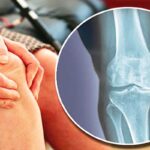
Foot and ankle injuries are prevalent among athletes of all levels and disciplines, often resulting from the repetitive stress and high-impact nature of sports activities. From sprains and strains to fractures and tendonitis, these injuries can sideline athletes and impede performance if not properly addressed. However, with the right preventive measures and timely treatment, athletes can minimize the risk of foot and ankle injuries and optimize their recovery. Let’s explore some of the most common foot and ankle injuries in athletes, along with strategies for prevention and treatment.
- Ankle Sprains: Ankle sprains are among the most common injuries in athletes, occurring when the ligaments supporting the ankle joint are stretched or torn due to sudden twisting or rolling motions. To prevent ankle sprains, athletes should focus on strengthening the muscles surrounding the ankle through targeted exercises, such as calf raises and ankle circles. Wearing supportive footwear and using ankle braces or tape during high-risk activities can also provide added stability and reduce the risk of sprains. Treatment for ankle sprains typically involves rest, ice, compression, and elevation (RICE), along with physical therapy to regain strength and range of motion.
- Plantar Fasciitis: Plantar fasciitis is a painful condition caused by inflammation of the plantar fascia, a thick band of tissue that runs along the bottom of the foot. Athletes who engage in activities that place repetitive stress on the feet, such as running and jumping, are particularly susceptible to this condition. To prevent plantar fasciitis, athletes should wear supportive footwear with adequate arch support and cushioning. Stretching exercises targeting the calf muscles and plantar fascia can also help reduce tension and prevent strain. Treatment may include rest, ice massage, stretching exercises, orthotic inserts, and physical therapy to alleviate pain and improve foot mechanics.
- Achilles Tendonitis: Achilles tendonitis is inflammation of the Achilles tendon, which connects the calf muscles to the heel bone. It often occurs in athletes who engage in activities that involve repetitive jumping or sudden changes in direction, such as basketball and soccer. To prevent Achilles tendonitis, athletes should incorporate strengthening exercises for the calf muscles and Achilles tendon into their training regimen. Gradual progression of activity intensity and duration can also help reduce the risk of overuse injuries. Treatment may involve rest, ice, eccentric strengthening exercises, and physical therapy to promote healing and prevent recurrence.
- Stress Fractures: Stress fractures are small cracks or fissures in the bones of the foot or ankle, typically caused by repetitive impact or overuse. Athletes who participate in high-impact sports such as running and gymnastics are at increased risk of stress fractures. To prevent stress fractures, athletes should gradually increase training intensity and duration, allowing adequate time for rest and recovery between workouts. Cross-training and incorporating low-impact activities into training regimens can help reduce the repetitive stress on bones and minimize the risk of injury. Treatment for stress fractures may include rest, immobilization, and gradual return to activity under the guidance of a healthcare professional.
Summary:
Foot and ankle injuries are prevalent among athletes, stemming from the repetitive stress and high-impact nature of sports activities. However, implementing preventive measures such as strengthening exercises, wearing supportive footwear, and gradually increasing training intensity can significantly reduce the risk of injury. Prompt evaluation and appropriate treatment are crucial for effective rehabilitation and return to sport in cases of injury. Dr. Ashish Suryavanshi, esteemed as the best orthopedic doctor in Pune and serving as an orthopedic doctor in Thergaon, emphasizes the importance of preventive care and timely treatment in managing foot and ankle injuries among athletes. With his expertise and dedication to patient well-being, Dr. Suryavanshi plays a vital role in helping athletes maintain optimal foot and ankle health, enabling them to stay active, competitive, and injury-free in their sporting endeavors.




